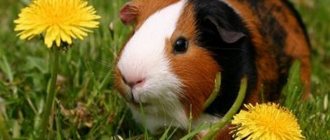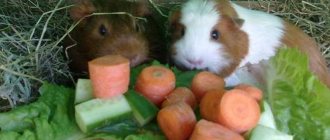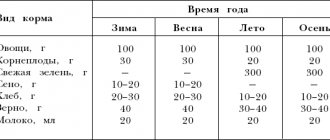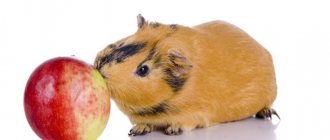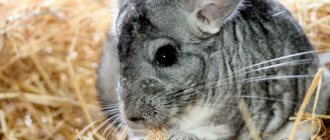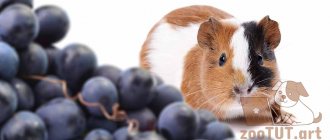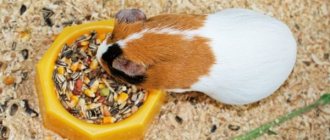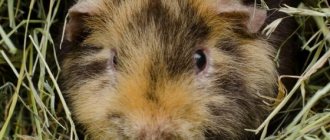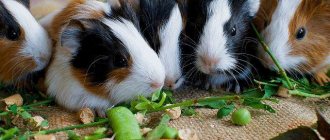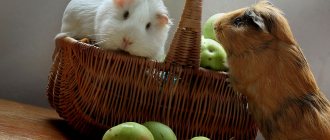Can a guinea pig eat dill?
Can
Dill is a type of grass, and grass, as we know, is the basis of the diet of guinea pigs.
Along with dill, guinea pigs love other “herbs from the garden” and also happily munch on parsley, mint, cilantro, arugula, and basil. All these delicious and aromatic herbs are rich in vitamins and nutrients. Dill is no exception. And this herb is remarkable not only because it is very good for health, guinea pigs really love its taste! All guinea pigs, without exception, love dill! This is one of the best treats for them!
However, as with any food, no matter how healthy it may be, moderation is good in everything, and you should not feed your pigs only dill. It can be given daily (in reasonable portions), but in combination with hay, grass, vegetables and fruits.
6 facts about dill and guinea pigs:
- Guinea pigs can eat dill daily in reasonable portions (5-7 sprigs). Just because dill is a herb does not mean it can be given in unlimited quantities.
- Dill has a very attractive taste for pigs.
- Dill contains a large amount of vitamin C, which is essential for pigs.
- Dill also contains many antioxidants and iron, which is necessary for the process of hematopoiesis and for the active functioning of cells.
- Dill contains calcium and phosphorus, so to prevent the occurrence of urolithiasis, it should not be given without restrictions.
- Too much dill can sometimes cause increased gas, flatulence, and loose stools.
Article on the topic: Hay for guinea pigs: which is better, how to prepare and give it
One of the main advantages of dill is that it is rich in vitamin C. Vitamin C is the most important vitamin for guinea pigs, which cannot synthesize it on their own, but only receive it with food from outside.
In addition, dill contains :
- fiber,
- vitamin A, which is necessary for the proper functioning of the heart, brain, kidneys and lungs,
- manganese is a powerful antioxidant,
- B vitamins, which are especially necessary for good development and growth and are very necessary for small piglets and pregnant females,
- zinc - for strong immunity and good metabolism.
Signs that it’s time to add dill and parsley to your dog’s diet
Dog owners should understand one rule - they should not radically change their dog’s diet too suddenly. If the body of a beloved pet lacks something from minerals, acids and vitamins, then the animal will show it with all its appearance.
The pet begins:
- Intensively gnawing earth, brick, plaster - there is a lack of calcium in the body.
- Ruining dirty socks or shoe insoles is a lack of B vitamins.
- Picking up cigarette butts is not enough vitamin P.
- Eating your own or someone else's feces - lack of vitamin B
The dog’s fur, as well as the condition of its eyes and the shape of its limbs can tell the owner that a dog’s body is deficient in any elements. The use of dill and parsley will help, together with other products, to replenish the pet’s body with everything it needs.
Dill
Dill contains carotene, thiamine, ascorbic acid, pectin, minerals and vitamins. Dill is good for digestion - it reduces the formation of gases in the intestines, suppresses putrefactive processes, improves appetite and digestion, and stimulates milk production. The leaves and stem can be given, but only in small quantities due to the essential oil content. During pregnancy, it is better to reduce your dill consumption.
Results
In conclusion, I would like to say that not everything that your guinea pig eats will be good for it. Do not try exotic products on her. If you don’t know whether your guinea pig can eat this or that product, it’s better not to feed it. A rodent in captivity cannot distinguish between products that are not healthy for it and therefore will eat everything you offer. On forums you can often see messages that some owners' guinea pigs eat almost all the foods on the prohibited list. But do not experiment on your pet; give him only vegetables, grass, herbs and fruits growing in our country. Believe me, without oranges, tangerines, bananas, kiwis and other harmful fruits, they will survive and live a long and happy pig life, delighting you.
Parsley
Parsley contains a lot of vitamin C and A, minerals; root parsley contains vitamins A, C, PP and group B. The root and green parts are suitable for guinea pigs to eat. The essential oils contained in parsley have a beneficial effect on the digestive system.
Parsley stimulates contraction of the uterine muscles and can cause premature birth, so this greenery should not be fed to pregnant females. Also, parsley is not recommended for consumption by lactating females, as it negatively affects lactation. So can a guinea pig eat parsley?
Article on the topic: Can guinea pigs eat raw potatoes?
Melon
The same goes for melon. This vegetable is given from your own garden or purchased in season. It is also not recommended to give melon frequently; it is very sweet and can contribute to the development of diabetes.
We tried to consider in as much detail as possible and give answers to the question “What vegetables can guinea pigs eat?” As you can see, most vegetables are not only possible, but also should be given to guinea pigs. The most important thing is a properly formulated and balanced diet for your pet, including products grown without chemicals. To keep your guinea pig healthy and cheerful, stick to proper nutrition and your pet will thank you with its playful behavior and healthy appearance.
Salad
Can guinea pigs have salad? The answer is clear: yes, guinea pigs can be given all types of lettuce. This plant is early ripening - a month to a month and a half after sowing, a rosette of succulent leaves is formed, which can be fed to guinea pigs. Lettuce leaves are a source of almost all vitamins - A, C, P, E, K, group B, as well as potassium, calcium and iron salts. Due to this content of vitamins and minerals, lettuce leaves help enhance digestion and metabolism in the pet’s body. You need to feed your guinea pig only fresh leaves, because the lettuce spoils in a very short time. Do not feed lettuce to a pig who is not accustomed to greens. Also, you should not feed your pet greenhouse greens due to the high amount of nitrates.
Rules for collecting and preparing green feed
After a long winter, it is not recommended to give guinea pigs a lot of juicy green grass at once. The body may not be able to cope with the abundance of lush greens.
As a result, the breeder will suffer serious problems - from indigestion to seizures and disruption of the cardiovascular system. Young grass and shoots are rich in potassium, which causes health problems. After the winter months, fresh, succulent food should be introduced into the diet gradually and little by little. If it turns out that they gave too much grass and the animal has indigestion, then in the next few days it is recommended to exclude any succulent food from the diet and give the guinea pig rice water to drink.
It is very important to understand that to feed animals, grass and tree branches should not be collected in places where pets walk or livestock graze, near roads and garbage dumps, near factories and large enterprises, and also where the land is treated with pesticides. You should also not collect grass in parks and forests where there are a large number of ticks. The collected grass does not need to be washed if the breeder is sure that the collection area is clean. However, if there is any doubt that the grass is too dusty or may contain any other contaminants, then it is better to rinse it under warm running water. It is not recommended to treat fresh grass with very hot water or boiling water. Short treatment does not kill eggs and larvae of worms and other parasites, but heat treatment will negatively affect the content of vitamins and all nutrients.
Herbal mixtures are stored in a regular bag in the refrigerator for a week.
If the goal is to harvest grass for the winter, then you should first chop it finely and put it into portioned bags, which are placed in the freezer. However, it is much easier and better to dry the grass for the winter. To do this, the collected succulent feed is laid out on a flat surface in a shaded and well-ventilated area. Hay can be stored for up to four to five months without losing its taste and beneficial properties.
Spinach
You can feed your guinea pig baby spinach casts, which contain a wide variety of vitamins, protein, potassium salts, iron, calcium and phosphorus, but only in very small quantities and not often. Because in addition to vitamins and minerals, spinach contains a large amount of oxalic acid. And all products containing acid, such as sorrel, rhubarb, sorrel, can cause harm to your pet. Therefore, it is better to stop feeding your pig these greens and offer your pet lettuce leaves.
Other
Among other things, it is worth mentioning that guinea pigs do not tolerate processed foods: fried, boiled, pickled, baked, canned. The owner must not feed the pet food from his table. Including sweets: chocolate, marshmallows, cookies, etc.
Other prohibited products include:
- mushrooms;
- sauces - ketchup, mustard, etc.;
- sorrel;
- plantain.
There are special sweets for rodents - drops. They come in different flavors - berry, citrus, vegetable
Pets really like them, they should be used carefully and offered occasionally, like regular fruits. Drops contain sugar, which is harmful to animals
Before offering your pet something tasty, you should check the list of prohibited foods. If there is no information on a specific product, the best option is to put it aside and choose something else.
Coriander
Coriander or cilantro can be fed to guinea pigs. This plant is good for flatulence; this greenery is used as an antispasmodic and antirheumatic remedy. Cilantro should only be given to pigs during the season.
Peppermint is good for your pet's intestinal tract, helping to soothe abdominal cramps, improve blood circulation and stimulate bile secretion. This plant should be given to your guinea pig in small quantities.
Article on the topic: Is it possible to give guinea pigs white cabbage, cauliflower and Chinese cabbage?
Celery
You can pamper your pet with celery leaves and roots, but only in small quantities and grown in your own area. Celery stimulates the secretion of gastric juice and improves water-salt metabolism. Celery should not be fed to pregnant females or animals suffering from kidney stones.
Melissa
Melissa, like mint, can be fed to guinea pigs only in limited quantities. Melissa stimulates digestion, has an antispasmodic effect and helps with stomach diseases.
Sometimes you can diversify your guinea pig's diet with a small amount of:
- basilica,
- marjoram,
- rosemary,
- thyme,
- tarragon and other herbs.
Thus, summing up our article and answering the question of whether guinea pigs can have dill, parsley and other herbs, let’s say the following.
If you live in an apartment and cannot offer your pet fresh grass, you can replace it with greens. Greens contain large amounts of vitamin C, which is essential for guinea pigs. In the summer, you can buy fresh herbs at the market, but in winter you can try growing greens on a windowsill or, which is much healthier, germinating wheat and oats.
Other
Among other things, it is worth mentioning that guinea pigs do not tolerate processed foods: fried, boiled, pickled, baked, canned. The owner must not feed the pet food from his table. Including sweets: chocolate, marshmallows, cookies, etc.
Other prohibited products include:
- mushrooms;
- sauces - ketchup, mustard, etc.;
- sorrel;
- plantain.
There are special sweets for rodents - drops. They come in different flavors - berry, citrus, vegetable
Pets really like them, they should be used carefully and offered occasionally, like regular fruits. Drops contain sugar, which is harmful to animals
Before offering your pet something tasty, you should check the list of prohibited foods. If there is no information on a specific product, the best option is to put it aside and choose something else.
Dill
Undoubtedly, fragrant bunches of dill will not only attract the pet’s interest, causing appetite, but also contain many nutrients and elements. First of all, the content of carotene, ascorbic acid and mineral salts is high. Naturally, any food should be ingested in small quantities; dill can improve your pet’s digestion by stimulating the gastrointestinal tract. There is no need to give more than 1-2 stalks of dill; also avoid feeding it during pregnancy, lactation, and poisoning. The greens and stems contain quite a lot of essential oils, so you shouldn’t overuse them.
Article on the topic: What can and cannot be given to rats: nutrition table
Poisonous plants
When going to a field or forest to look for green food for your pet, do not forget that there are dangerous plants that can cause not only severe poisoning, but also the death of your pet.
Not all grass can be eaten
Deadly plants
Remember this list of poisonous plants that guinea pigs should not eat:
- sorrel leaves;
- nightshade leaves and shoots;
- leaves of lilies of the valley, daffodils;
- aloe;
- arum;
- fighter;
- celandine;
- hyacinths;
- lily;
- fern;
- geraniums of all kinds;
- henbane;
- digitalis;
- wild radish;
- stinking dope.
Feeding with such plants can be fatal.
Food poisoning
The following plants, which can cause food poisoning, are considered no less dangerous for guinea pigs:
- ivy of all kinds;
- wild mustard;
- wisteria;
- gorse;
- honeysuckle;
- dogwood;
- yew;
- laurel;
- derain;
- hellebore;
- common broom.
Of the tree species, guinea pigs are prohibited from giving hellebore and belladonna greens, privet, mistletoe, oleander, thuja, juniper and elderberry.
If you come across a poisonous plant
There is nothing wrong with this if, while feeding grass, the animal eats a couple of poisonous leaves or twigs. After all, as you know, poisons in small quantities are medicine. The degree of concentration of toxic substances in plants depends on the time of day and year.
Guinea pigs have a unique sense of touch and smell, so the animals themselves determine which food is best for them and will not harm them.
If it happens that the pig tastes a poisonous plant and feels unwell, it will remember it and avoid it next time.
Parsley
Parsley also contains many beneficial essential oils, vitamins and mineral salts. Obviously, it is suitable for feeding a guinea pig, but requires compliance. Not only the stems, but also the leaves are eaten. However, there is no need to include parsley in the diet of pregnant women, so as not to provoke premature uterine contractions. In addition, in large quantities, parsley can even become toxic to your pet; there is no need to give it in excess, despite its beneficial composition.
Many people are familiar with the beneficial properties of mint; it has a calming effect on the stomach and overall digestion, but not everyone knows that this also applies to guinea pigs. Therefore, mint will be useful for the animal in case of stomach upset. Peppermint not only soothes the gastrointestinal tract, but also improves blood circulation and stimulates the gallbladder. However, like any greens containing essential oils, you should not exceed the amount of a couple of leaves per day.
Useful
Useful plants for a guinea pig include meadow grasses, lanceolate and broadleaf plantains, dandelions, nettles, sage, chamomile, coltsfoot and vetch, quinoa, wormwood, chickweed, fodder beets and cinquefoil. Useful plants also include sunflower and corn, any part of which guinea pigs simply adore.
We suggest you read: Old sores, problems of older cats
Grass should be introduced into the diet of rodents very carefully, since they are saturated with minerals that cause the deposition of stones in the animal’s bladder. Therefore, it is better not to overuse plants such as lemon balm, peppermint, nettle, dill, lovage, savory and garden marjoram, parsley and sage.
Without fear, you can add the following plants that have medicinal properties to the diet of guinea pigs: anise, young shoots and leaves of blackberries, calendula, chamomile, cumin, coriander, woodlice, clover, ripe rose hips, berries and leaves of lingonberries, wild strawberries and blueberries (in small quantities), coriander, chamomile, yarrow, linden flowers, lettuce, raspberry leaves, shepherd's purse, peppermint.
Melissa
Like peppermint, lemon balm perfectly soothes the stomach and can normalize the functioning of the intestines and the entire digestive system. A small amount of this greenery can relieve the feeling of spasm, but you should not overdo it with feeding either.
Sources:
https://svinki.ru/doc/%D0%BF%D0%B8%D1%82%D0%B0%D0%BD%D0%B8%D0%B5-%D0%BC%D0%BE%D1% 80%D1%81%D0%BA%D0%B8%D1%85-%D1%81%D0%B2%D0%B8%D0%BD%D0%BE%D0%BA/%D0%BC%D0% BE%D0%B6%D0%BD%D0%BE-%D0%BB%D0%B8-%D0%BC%D0%BE%D1%80%D1%81%D0%BA%D0%BE%D0% B9-%D1%81%D0%B2%D0%B8%D0%BD%D0%BA%D0%B5/%D0%BC%D0%BE%D0%B6%D0%BD%D0%BE-%D0 %BB%D0%B8-%D0%BC%D0%BE%D1%80%D1%81%D0%BA%D0%BE%D0%B9-%D1%81%D0%B2%D0%B8%D0 %BD%D0%BA%D0%B5-%D1%83%D0%BA%D1%80%D0%BE%D0%BF/ https://moy-homyachok.ru/morskie-svinki/mozhno-li- morskim-svinkam-ukrop.html https://homjakam.ru/morskaya-svinka/pitanie-svinok/petrushku-i-ukrop
Chickens
Dill is a source of vitamins and minerals for chickens, so it must be included in their diet. They start giving it to chicks on the 3-4th day of life.
In order not to cause stool upset and other undesirable consequences, this herb should be added to the menu very carefully. If the chicks begin to develop diarrhea, feeding this grass should be stopped.
It can be added to both dry food and mash. The ratio should be 1:5. It is recommended to feed chickens with this mixture no more than once a week.
